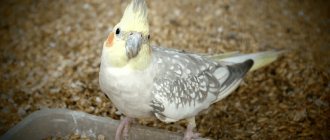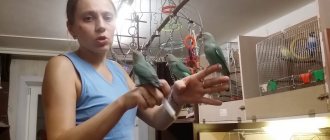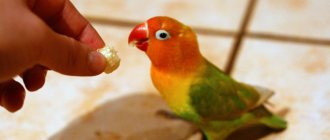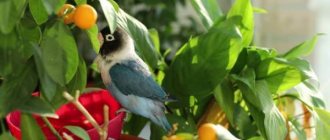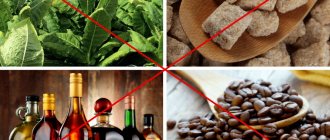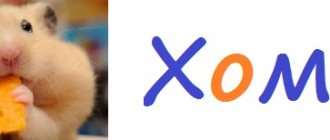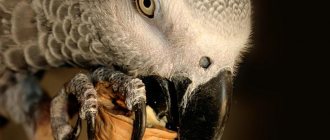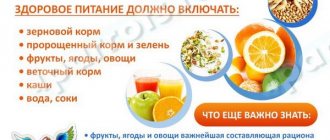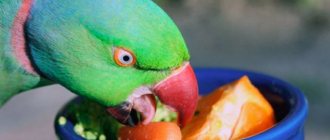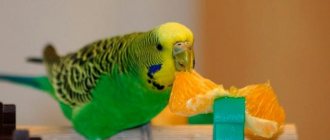Budgerigars are considered popular pets, as they delight owners with pleasant singing, communication and beautiful appearance. When buying a bird, it is important to choose the right cage and toys for it and also find out what parrots eat.
It is important to pay attention to the correct diet, which affects the appearance and health of the bird. It is recommended to use not only high-quality store-bought mixtures, but also to pamper the bird with fruits, herbs, berries, vegetables or nuts.
How to feed your cat properly with natural food
You cannot feed an animal food from a human table: a cat has its own digestive system, different from a human one, and therefore many human dishes can be harmful, lead to illness, and in some cases, the death of a pet.
A cat by nature is a predator, so the basis of its diet will always be protein foods. Hormonal levels and the production of enzymes, the stability of the immune system and the maintenance of water-salt balance depend on the consumption of protein, especially of animal origin.
A balanced diet should contain fats. They saturate the body with fatty acids, which are necessary for cell growth and regeneration.
Vegetables do not play a big role in the diet of cats, but they are a source of vitamins and normalize intestinal function, so it is necessary to introduce a small amount of vegetables into the diet, such as:
- carrot;
- cabbage;
- cucumbers;
- salad;
- pumpkin;
- zucchini.
Important! Cat foods are cooked or fed raw. To preserve the health of your pet, cooking methods such as frying, baking, and smoking are unacceptable.
Meat and offal
The basis of a healthy diet for representatives of the cat family is meat and meat by-products.
Cats can and should be fed the following meat products:
- Beef is the basis of the diet, the main thing is that it is not too fatty.
- Lamb, horse meat, and rabbit meat are quite acceptable in the diet of cats 2-3 times a week.
- Chicken or turkey can replace up to half of the meat diet. It is not advisable to feed poultry skin to cats: it contains too much fat.
- By-products - heart, kidneys, liver - are acceptable in the diet in moderation and pre-frozen.
Frozen meat must be thawed and doused with boiling water, warmed to room temperature and only then given to the animal.
Important! Pork is contraindicated for cats: it contains too much fat and is difficult to digest in the gastrointestinal tract.
Dairy products
Dairy products are necessary for the cat's body as a source of animal protein, but natural milk is practically not absorbed by the digestive system, since the body does not produce a special enzyme to break down lactose.
But fermented milk products, on which various bacteria and rods have already worked, are perfectly digestible:
- kefir;
- cottage cheese;
- fermented baked milk;
- low-fat sour cream;
- yogurt.
All these fermented milk delicacies can be present in a cat’s diet every day, but always in small portions; they cannot be made the main dish.
Attention! Do not give animals fermented milk products with a long shelf life with preservatives. Products suitable for cats have a short shelf life - from three days to a week.
Fish as a basis for natural food
The basis of natural feeding for a cat should still be meat. It will not be possible to completely replace it with fish. Thawed sea or ocean fish can be given two to three times a week, replacing meat with it. Raw fish is given to the animal along with the bones: this is beneficial for the functioning of the cat’s digestive tract.
Attention! In boiled fish, the bones must be removed, since the bone in the boiled mass is easily separated from the fibers and can be swallowed whole by the animal.
Other foods for a healthy diet
You can include porridge made from rice or buckwheat in your diet. But only occasionally and little by little, you cannot constantly feed the animal with cereals.
Cereals are not healthy for a cat’s diet: they contain too many carbohydrates, which can cause an imbalance in the digestive system and destroy the intestinal microflora, which will lead to dysbiosis and a decline in overall immunity.
Attention! A large amount of carbohydrates in a cat’s diet causes problems with the functioning of internal organs, can provoke allergic reactions and lead to excess weight gain.
First meal
The first meal occurs early in the morning - the baby wakes up hungry after a 6-8 hour break in food. The best option would be to feed your baby breast milk or an adapted formula. Experts in the field of child health and nutrition recommend maintaining breastfeeding (BF) until at least the end of the first year of life. The nutritional value of mother's milk at this age is already low, but as a source of the most important biological substances and psycho-emotional comfort, it is undoubtedly priceless. If the child is bottle-fed, you can prepare him a drink based on an adapted mixture. It is not recommended to feed a child with whole cow's milk until the end of the first year of life. The fact is that the protein in cow's and goat's milk can cause an allergic reaction, in addition, it causes damage to the infant's intestinal epithelium and is a serious burden on the kidneys. Do not rush to introduce this unadapted product into your baby’s diet.
What not to feed cats
Cats eat food from the human table with enviable pleasure, and many owners watch with emotion as the animal happily treats itself to candy or a piece of chocolate, licks ice cream or eats a slice of melon, peach, tomato, sausage, or cheese.
Of course, a one-time consumption of a small amount of products that are exotic for the cat’s body is unlikely to lead to a serious illness, but you cannot constantly give such products to an animal: this can cause a chronic disease and significantly reduce the pet’s life expectancy.
The following foods should not be included in cat food:
- Fresh milk - this leads to impaired intestinal motility and indigestion.
- Food from the table - salt and seasonings contained in human food can even cause poisoning. And sausage, for example, contains soy products and a lot of fats, which are harmful to the cat's health.
- Sweets - carbohydrates are harmful to cats, since sugar is not processed at all by the digestive system.
- Coffee and alcohol are poisons for animals.
- Raw unprocessed meat and river fish - it is better to give the meat boiled or at least pour boiling water over it, since there is a high possibility of infection with helminths. River fish can be present in a cat's food only in boiled form, with selected bones.
- Pork – contains too much fat that the animal’s stomach may not be able to handle.
- Tubular or sharp bones - damage to the esophagus or stomach will definitely lead to the death of the pet.
Eating such products by an animal will inevitably lead to illness and deterioration in health.
Veterinarian advice
There are several tips that experienced veterinarians give to cat owners who want to feed their pets natural products:
- You cannot feed fermented milk and meat products to an animal at the same feeding. Fermented milk products are given at one meal, and meat at another.
- Fermented milk products can be given separately or mixed together; only bran or half a raw egg can be added to them.
- Meat feeding is either meat, fish, or offal. You should not mix foods in one feeding.
The cat should always have a bowl of clean, fresh water: the animal should be able to replenish the lack of moisture in the body when it needs it.
Flour foods and diabetes
If an animal has a disease such as diabetes, then flour food is strictly contraindicated for it. A carbohydrate-free diet is indicated for feeding animals with this disease.
Eating food high in carbohydrates will aggravate the disease and may lead to the death of the animal.
Attention! Cats are not recommended to eat food containing large amounts of carbohydrates.
What foods are bad for ducks?
List of products dangerous to the normal functioning of birds:
| The product's name | Harm |
| Bread products, baked goods and any other flour products | Fermentation of yeast, blockage of the digestive system. Death. |
| Crackers | The product swells in the stomach and makes breathing difficult. |
| Flour | The use of fishmeal is allowed, but not ordinary one. The bird will suffocate. |
| Zucchini | Has laxative properties. The duck will begin to sway and walk heavily. |
| Moldy products | Mold doesn't just harm people. Fungi form inside the body, causing chronic disease. |
| Leaves of maple, oak, birch and poisonous plants | Anything that harms a person is twice as harmful to an animal. |
Birds, just like people, can suffer from an improper diet. If you don’t know what to feed the duck, it’s better to leave the idea altogether.
Advantages and disadvantages of natural nutrition
Feeding your cat natural foods has its advantages and disadvantages.
The main disadvantages are:
- the difficulty of creating a balanced diet;
- the need to give the animal separate vitamin and mineral complexes;
- short shelf life of the finished dish.
Advantages:
- ability to control quality;
- lower cost of products compared to ready-made feed;
- natural products are closer to natural nutrition;
- absence of dyes and preservatives in food.
Proper home nutrition prevents the occurrence of chronic diseases and allows the cat to lead a more active lifestyle.
It should be understood that when deciding to feed your pet natural products, the owner will have to spend part of his free time preparing food for the animal.
What happens if you add it to your diet?
Dill and parsley can be given to your budgie in small doses. Therefore, it is advisable to add such greens to the main diet.
It is important to monitor the bird’s reaction; if an allergy occurs, the amount is reduced. Adding parsley to a cockatiel's menu is prohibited.
This will help avoid complications of kidney disease. Poisoning with these greens can cause the death of your pet. Medicinal properties include blood purification. It removes harmful substances and treats arthritis. Under its influence, feathers and skin become healthier, the digestive system comes into tone. Considered a natural antibiotic.
Table: healthy and prohibited foods in a cat’s diet
The table below lists foods that can and cannot be given to a cat:
| Healthy | Harmful |
| Meat other than pork | Bread and flour products |
| By-products | Legumes and soybeans |
| Vegetables with low starch content | Potatoes and corn |
| Sea fish | Sweets |
| Cereals: rice and buckwheat | Chicken hollow bones |
| Dairy products | Fruits |
| Greenery | Fresh milk |
Afternoon snack
An afternoon snack, although not the main meal, is necessary for the baby to reinforce his strength after a nap and provide the necessary energy for active activities in the afternoon. The ideal is a dairy product rich in easily digestible protein and fat, combined with cereals and fruits that complement the dish with carbohydrates and fiber. For a 10-month-old baby, this could be a specialized fermented milk drink combined with baby cookies and fruit. Another option could be a special industrial product “Porridge for an afternoon snack”, which is a delicious dessert combining cereals, milk and natural fruits. In addition to its nutritional value, it is a source of dietary fiber, organic acids, vitamins and microelements. And for kids it is a delicacy, because the dish has a delicate texture and pleasant taste.
Natural menu for cats every day for 7 days
For an adult animal, it is enough to divide the daily diet into two times, especially if it lives in a small apartment and does not have the opportunity to walk.
Sample menu for the week:
- Breakfast - chopped beef mixed with grated vegetables, dinner - cottage cheese mixed with half an egg.
- Breakfast - boiled chicken with rice, dinner - a piece of liver or heart.
- Breakfast - cottage cheese with low-calorie sour cream, dinner - chicken necks.
- Breakfast - boiled boneless fish, dinner - grated vegetables and beef.
- Breakfast – chicken with buckwheat and chopped herbs, dinner – kefir and egg.
- Breakfast - offal and boiled rice, dinner - chicken necks.
- Breakfast - fermented baked milk and buckwheat, dinner - defrosted sea fish.
By alternating foods, you can feed your animal tasty and inexpensive, maintaining the balance of nutrients it needs.
Important! The owner must remember that a cat with a natural diet must be given vitamin and mineral preparations for preventive purposes.
Green feed
It must be remembered that it is not enough to give birds only grain mixtures; their diet should be supplemented with other ingredients. For example, green food. Fresh greens contain many vitamins, so they are very healthy.
What do budgies like? Birds really like to eat young tree branches; they happily eat buds, bark, and wood. In addition, parrots willingly eat leaves of vegetable plants, the so-called “tops” - young leaves of carrots, radishes, and lettuce. In summer there is no shortage of leaves and herbs. To know what grass budgies eat, you need to carefully read and memorize the list below.
In the summer you can pick the following plants: dandelion, clover, chickweed, bluegrass, fireweed, shepherd's purse, wheatgrass, plantain, nasturtium, timothy, strawberry leaves. Plants should be plucked away from roads and busy highways, and pets should be avoided. It is best to collect plants outside the city limits.
But it should be remembered that not all plants are useful for parrots, and some are even dangerous. Fans of feathered pets should remember well what is prohibited for budgies.
Some indoor plants are very dangerous for these birds; parrots can become poisoned if they eat them. Among these plants are amaryllis, hyacinth, azalea, hydrangea, periwinkle, dieffenbachia, cocoa tree, caladium, jasmine, narcissus, cana, bracken fern, nightshade, colocasia, poinsettia, crocus, laurel, ranunculaceae, oleander, ivy, philodendron, aeonium and etc.
Poisonous flowers: tulip, narcissus, poppy, peony, etc. Poisonous wild plants: buckthorn, white acacia, oak, burdock, juniper, horse chestnut, elderberry, etc.
Twig food is perfect for vitamin feeding in winter. Tree branches also help clean the parrot's beak.
The following branches are excellent for branch food: - Birch, - Linden, - Currant, - Cherry, - Apple, - Raspberry.
Among the trees there are also poisonous for small pets: lilac, bird cherry, coniferous trees, pear.
How to switch an animal to natural food
It’s good when a kitten is accustomed to natural products from childhood, but it is quite possible to retrain a cat that is accustomed to dry food. If you change food suddenly, the animal may become stubborn, refuse to eat and go hungry for several days. To make the transition painless, you will have to try a little.
Natural food should be mixed in a small amount into the daily portion of dry food, replacing approximately 10% at first. Gradually, the share of natural food should be increased, and dry food should be reduced. After two weeks, you can completely switch to natural nutrition.
Grain mixtures
The most important part of a budgie's diet is cereal seeds. The seeds are very nutritious and contain sufficient calories. It is important that the birds eat the seeds of various cereal plants.
A basic grain mixture for feeding birds can be made up of 40% canary seed, 20% millet, 20% French millet and 20% oats.
Canary seed is the seed of the canary plant. This is a very good food for budgies; the grain mixture can contain up to 40%.
Millet is also a very popular food for parrots. It can be up to 50% in the grain mixture. Moreover, millet can be of different varieties - yellow, white, red. For budgies, it is best to take red millet, as it contains a lot of carotene - provitamin A.
Oats are another essential and nutritious food. It contains a large amount of protein. In winter, budgies are given more oats than in the summer months. Instead of oats, you can give peeled oats - oatmeal; it is well suited for feeding sick birds.
A good grain mixture should be clean, free of impurities, the grain in it should be shiny and have a pleasant smell. If the mixture has a musty smell, it is not suitable as feed.
You can make the grain mixture yourself, or you can purchase it at a specialty store. Such mixtures are formulated in accordance with the nutritional needs of birds and are well balanced.
Features of nutrition of different categories of animals
Some categories of animals have their own feeding habits depending on age and position.
Sterilized pets
Portions for spayed and neutered pets must be strictly adjusted. Such animals should not be overfed. If the animal gains excess weight, then you need to reduce the portion or switch to foods with lower calorie content.
Kittens
Milk should be present in the kitten’s daily diet; meat is given ground in a blender or meat grinder; the daily portion is divided into 5-6 meals.
Pregnant and lactating cats
The nutrition of a pregnant and lactating cat must be enhanced; you need to rely on the animal itself and the kittens that it carries and feeds.
Attention! After the animal eats food, the cup with leftover food must be removed; the food should not sit and sour all day.
Greens for birds
Before feeding your pet, the necklace parrot, you should remember that it is important for such a bird to eat greens. It contains a lot of useful microelements, minerals and vitamins
However, not all plants can be added to a bird’s diet. The list of fertilizing in the form of greens is presented by experts in the following form:
- vine;
- yellow acacia;
- blooming Sally;
- dandelion;
- nettle;
- carrot and beet tops;
- clover;
- plantain.
All plants should be stored only in the refrigerator, after placing them in a dry bag. The shelf life of greens is no more than one week. Before serving to the bird, it must be thoroughly washed and crushed.
Sample recipes for cats
Cooking for cats is not difficult, the main thing is that you don’t need to add salt, pepper or sugar:
- Mix low-fat cottage cheese with half a chicken egg, and the dish is ready.
- Finely chop the vegetables, boil and mash with a fork, add finely chopped meat or minced meat, a few drops of vegetable oil. You can give it in the form of porridge, or you can dilute it with broth.
- Finely chop the offal and mix with finely grated vegetables.
- Cut the chicken meat into pieces and boil for ten minutes in a small amount of broth, add a little buckwheat or rice and after a couple of minutes turn off the stove, leave under the closed lid for about twenty minutes.
It is not necessary to cook for your pet at once; you can store the prepared food in the refrigerator. Warm the food to room temperature before serving.
Water for parrots
Eating budgerigars at home will not be optimal without water. It doesn't have to end. Do not add water, but change it every day! The drink should be at room temperature so that the bird does not catch a cold. Water should not be boiled, filtered, or filled with carbonated water. If you are not sure about the quality of your water, then buy regular drinking water in the supermarket. In winter, add 2 drops of lemon juice to the drinker to support immunity. In addition to water, parrots are pampered with freshly squeezed juices. Juices from a package are not suitable due to the sugar content.
What happens if you add it to your diet?
Dill and parsley can be given to your budgie in small doses. Therefore, it is advisable to add such greens to the main diet.
It is important to monitor the bird’s reaction; if an allergy occurs, the amount is reduced. Adding parsley to a cockatiel's menu is prohibited.
This will help avoid complications of kidney disease. Poisoning with these greens can cause the death of your pet. Medicinal properties include blood purification. It removes harmful substances and treats arthritis. Under its influence, feathers and skin become healthier, the digestive system comes into tone. Considered a natural antibiotic.
Twigs
Many bird owners, who are often interested in the question of how to properly feed a budgie, pay attention to the fact that their diet must include branches of various trees. Branch food has several advantages:
- parrots clean and sharpen their beaks on twigs;
- with its help, birds improve the condition of their claws;
- has a positive effect on health due to its fiber content and various microelements.
Preference should be given to twigs from maple, fruit trees, aspen, birch, and alder. Before giving them to your pet, they should be treated with hot water.
But this is not allowed!
The list of prohibited herbs is much more modest. First of all, these are spicy herbs such as cilantro, basil, etc. And then the list will look like this:
- St. John's wort,
- onion,
- buttercup,
- tansy,
- sagebrush,
- yarrow,
- horsetail,
- celandine,
- sorrel.
These wild herbs may contain alkaloids or nitrates, which does not contribute to the health of winged pets.
It is easy to make the “green menu” of parrots healthy and varied by changing the “dishes” every day, alternating different types of herbs. Regarding dill, parsley and spinach, owners of ornamental birds can be advised to use these herbs for complementary feeding purely at their own discretion, because there are enough other useful plants.
